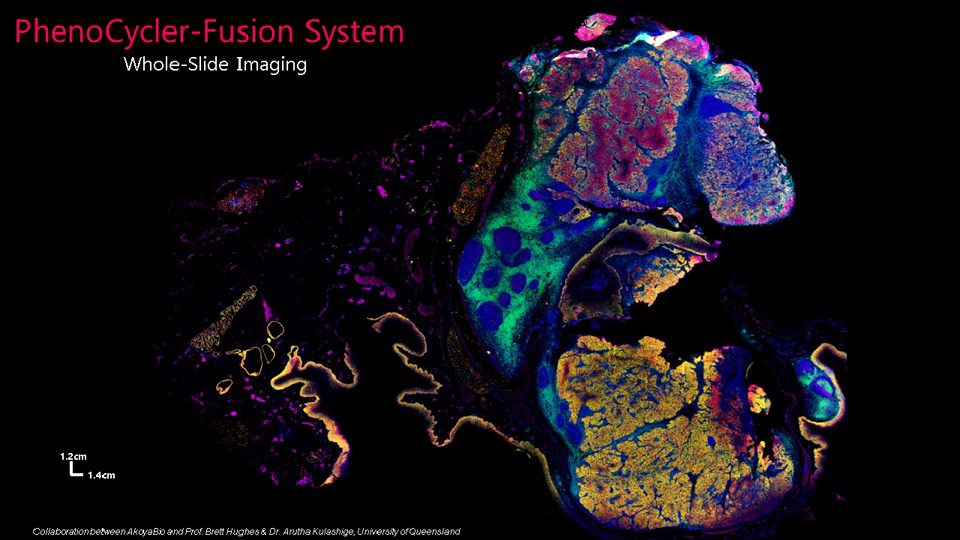Main Menu
We’ve rebranded some of our products, learn more ›
CODEX® is now PhenoCycler,
Phenoptics™ is now Phenolmager.
Understanding Epstein-Barr Virus-Associated Disease via Spatial Phenotyping: From Primary Infection to Malignancy
Original Air Date: August 3, 2022
Spatial phenotyping allows researchers to view, characterize, and quantify cells by lineage and variant with single-cell resolution in the context of an intact tissue sample. In areas such as oncology, immunology, and neurodegenerative and infectious diseases, it has opened new insights into the interplay between different cellular actors in promoting or suppressing disease. The Epstein-Barr virus (EBV), a group 1 carcinogen, is a causative factor for nine different cancers that cause roughly 165,000 deaths globally each year. EBV is asymptomatically carried among almost all adults, with the virus persisting primarily in rare memory B cells. However, in some infected individuals, EBV is associated with the development of cancer. The immune microenvironment in which infected cells reside may influence or trigger cancer development, but it is still unknown how this occurs.
This webinar will address how spatial phenotyping is uniquely suited to outline one of the putative causative relationships between EBV infections, immunosuppression, and cancer.
In this Webinar You Will:
- Learn how a meticulously designed and highly specific antibody panel provides the sensitivity and specificity required to characterize Epstein-Barr virus (EBV)
- Be presented with a framework that associates specific EBV expression profiles with a unique tissue architecture and immune infiltrate
- Discover how end-to-end analysis pipelines are used to examine high-dimensional spatial data
- Uncover how cellular neighborhood analysis of nasopharyngeal carcinoma provides unbiased analysis of tissue microenvironments
Video

Speaker

Eanna Fennell, Ph.D.
Bernal Institute, University of Limerick Limerick, Ireland
Biography
Dr. Fennell is a postdoctoral researcher in the lab of Paul Murray in the Health Research Institute, University of Limerick in Ireland. He obtained his Ph.D. in biomedical engineering in 2019 from the University of Limerick working on computational modeling and image analysis in the biomaterials field. Dr. Fennell then joined Murray’s group to apply his background in algorithm development to understanding the role of viruses in the pathophysiology of diseases through the spatial analysis of multiplex immunohistochemistry techniques.


